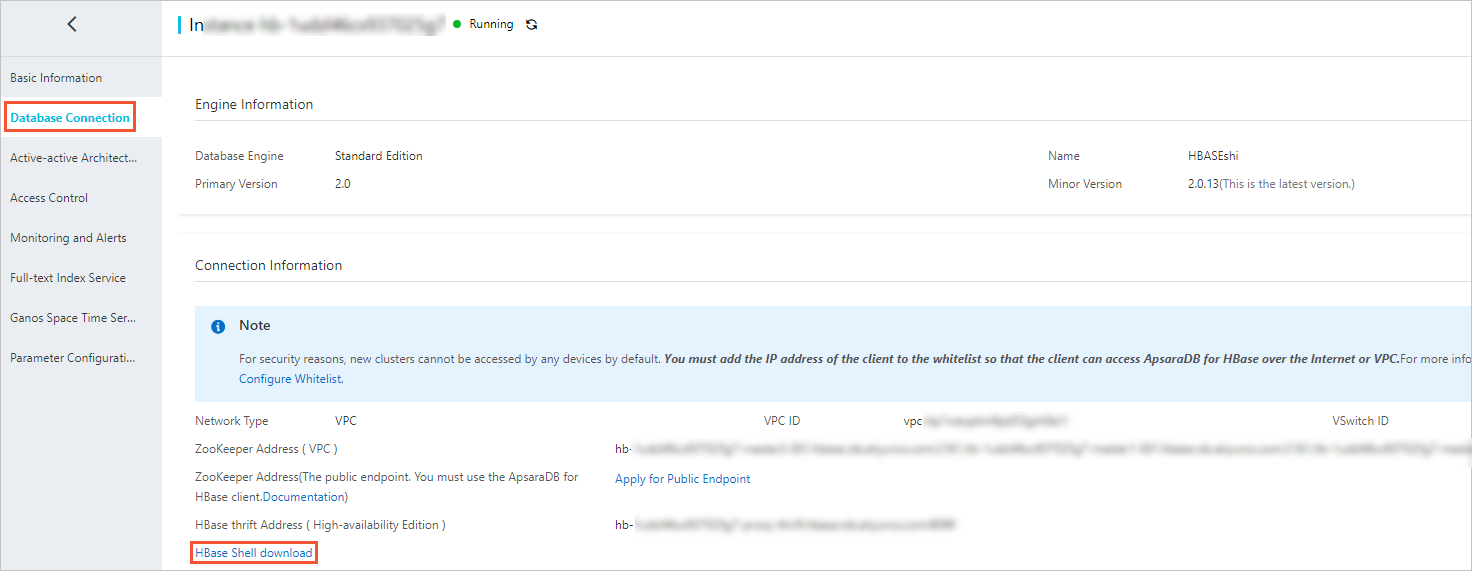This topic describes how to use HBase Shell to access an ApsaraDB for HBase Standard Edition instance.
Prerequisites
- If you connect to an ApsaraDB for HBase Standard Edition instance over an internal
network, make sure that an Elastic Compute Service (ECS) instance is purchased. This
ECS instance must be deployed in the same virtual private cloud (VPC) as the ApsaraDB
for HBase Standard Edition instance. Make sure that the IP address of the ECS instance
is in the whitelist of the ApsaraDB for HBase Standard Edition instance.
- For more information about how to purchase an ECS instance, see Create an ECS instance.
- For more information about how to configure an IP address whitelist for an ApsaraDB for HBase Standard Edition instance, see Configure a whitelist.
- If you connect to an ApsaraDB for HBase Standard Edition instance over the Internet, make sure that you have added the IP address of the server to run shell to the whitelist of the instance. For information about how to configure a whitelist for an ApsaraDB for HBase Standard Edition instance, see Configure a whitelist.
Procedure
- Download the HBase Shell package.
- Configure the ZooKeeper addresses of the instance.
- Run the
bin/hbase shellcommand to access the instance.
What to do next
If you use HBase Shell to connect to an ApsaraDB for HBase Standard Edition instance, you can perform all operations on the instance, such as DML operations, read and write operations, table creation operations, and database O&M operations.


